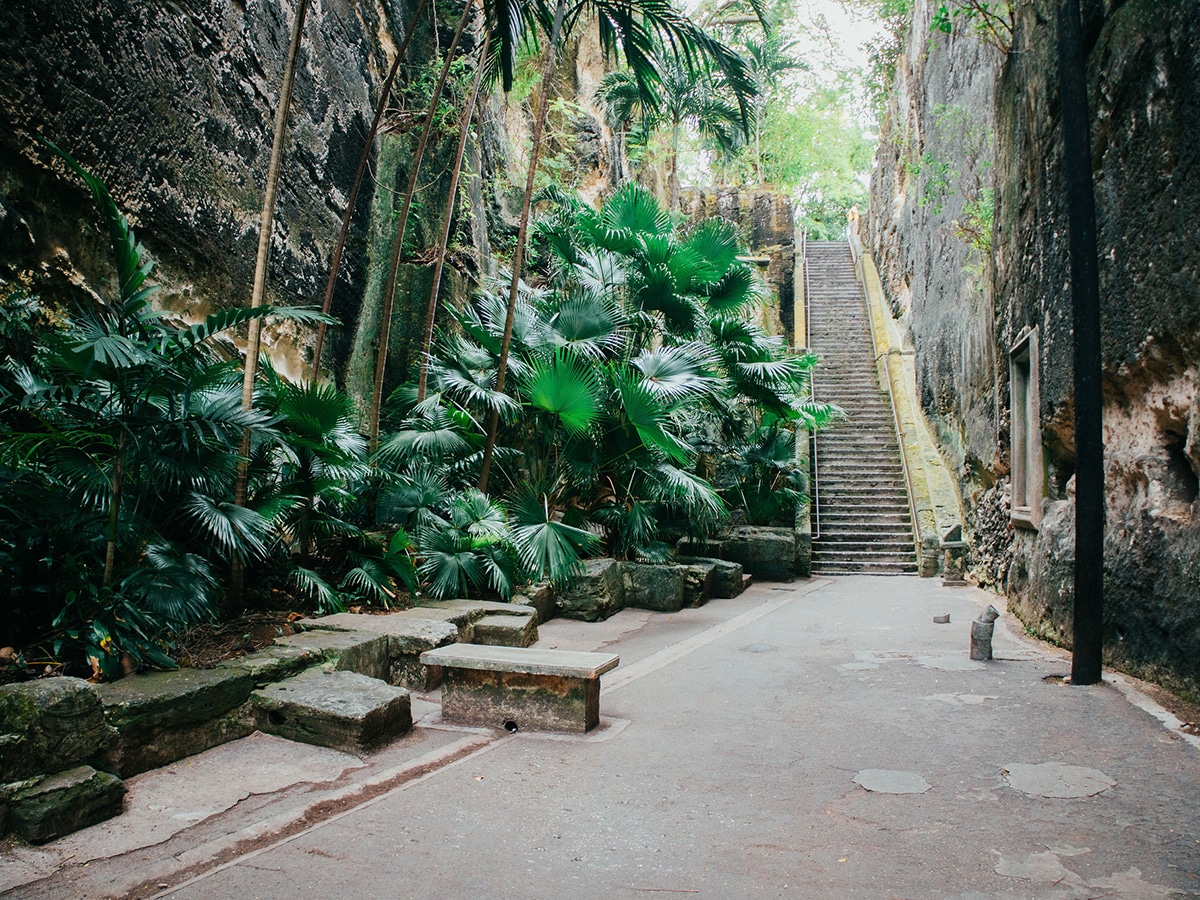It’s one of the most iconic spots in all of Nassau and Paradise Island in The Bahamas: the Queen’s Staircase, which was built in the mid-1830s and eventually named for Queen Victoria.
The staircase in the heart of downtown Nassau was hand-carved by 600 formerly-enslaved people, who carved an impressive 66 steps using only rudimentary tools. It was originally intended to be a hidden pedestrian access to the eastern portion of the local community.
It was named for Victoria, who signed a declaration to abolish slavery upon her ascension to the throne in 1837.
Now, the beloved staircase is getting new life, thanks to a $200,000 initiative by the Nassau Paradise Island Promotion Board, which seeks to “preserve and enhance this iconic spot steeped in rich history.”
“With its historical significance and architectural splendor, The Queen’s Staircase holds a special place in the hearts of both locals and visitors. I am thrilled to be launching this restoration project to ensure it remains a treasured spot for years to come,” said Joy Jibrilu, CEO of Nassau Paradise Island Promotion Board. “This restoration project reflects the Nassau Paradise Island Promotion Board’s commitment to improving product quality, development, and tourism infrastructure in Nassau & Paradise Island, and we look forward to seeing our cultural landmark returned to its full glory.”
The wide-ranging project will include the repair and restoration of the staircase’s water feature; the installation of solar LED lighting; new lighting systems for the staircase and walkway; new landscaping; upgraded site signage and a new information plaque; and monthly maintenance, among other projects.
It’s a significant step for a landmark that “is a remarkable achievement,” according to Rosen Moxey, chair of The Bahamas’ Antiquities, Monuments & Museums Corporation.
“It is no wonder that for almost 200 years this staircase has become such a prominent tourist attraction,” she said. “What was once meant to be invisible, has been observed, photographed, and traversed by millions, with many more visitors expected in the future thanks to this project.”
